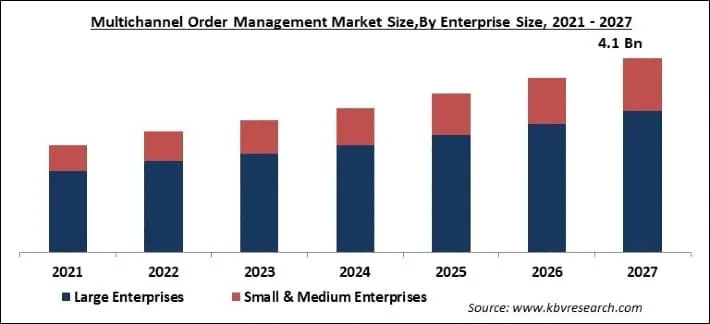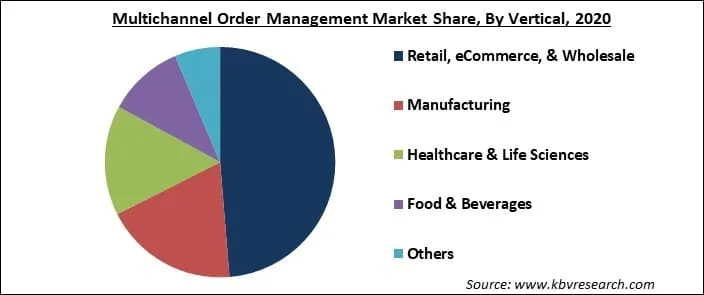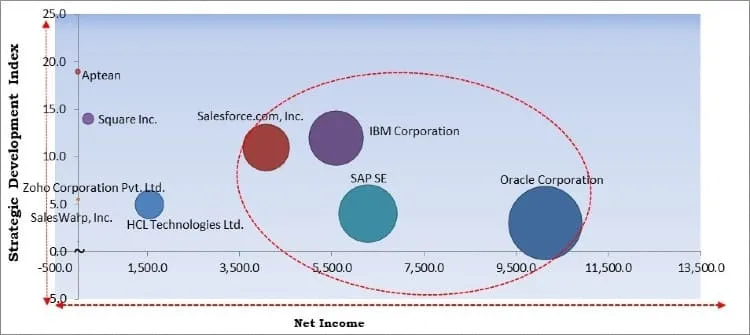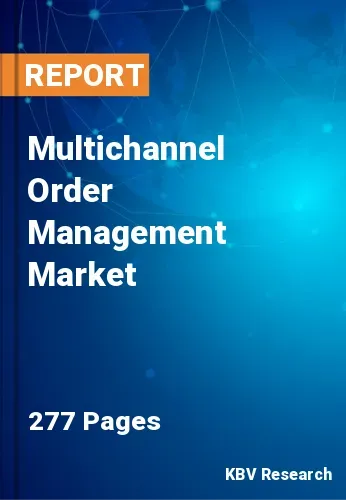The Global Multichannel Order Management Market size is expected to reach $4.1 billion by 2027, rising at a market growth of 10.4% CAGR during the forecast period. A multi-channel order management solution (MOM) refers to business-to-business programming developed for various types of retailers with an aim to sell their products and highlight online business.
Multichannel perform the arrangements by the executive majorly aimed to assist combine requests from various channels into a same kind of list and after the newest costs across all business changes during fluctuations in costs. For a few multichannel orders, the arrangements of the executive are used for basic needs and to manage the business on the basis of the board arrangement.
In addition to it, unique innovations such as massive information examination, computerized stores, distributed computing, and web-based media companies are emerging due to the constant advancements in the online market, associations, mainly retail locations. Moreover, this process helps in attracting a greater number of customers and increases the existing customer base.
In addition to it, the adoption rate of the global multichannel order management market is boosting due to the huge increment in retail sales & online shopping vertical, mainly in developing countries. Moreover, the demand for scalability the companies are becoming nimbler and more flexible, resulting in the constant increment in the multichannel selling, thereby boosting the requirement to embrace multichannel order management (MOM) inside the enterprises. As multichannel order management is less expensive in comparison to conventional solutions, their demand is increasing at a rapid pace.

The warehouse across the world will witness a strong impact due to the outbreak of the COVID-19 pandemic. The virus created a ripple effect while spreading at a rapid pace around the world. An outbreak or transportation delay that happened in one region of the world has an adverse impact on a worldwide scale, resulting in a closure of warehouses or completely halting or delayed supplies. The worldwide supply chain grappled to maintain its pace due to the rapidly spreading virus.
The outbreak of the COVID-19 pandemic was not the reason to initiate the massive growth in eCommerce; however, it was the reason for the recent increment in the demand. Therefore, omnichannel distribution also witnessed a massive boost. Warehouses changed their approach from taking full cases for retail locations to picking products for end customers; they also required handling multiple delivery options.
Omni-channel involves allowing the customer to purchase from anywhere (in-store, online) and delivering the items where they want (shipping to home, pick up in-store, curbside pickup). This also involves the return of the product (ship to return or return in-store). The demand among the customers has always been high, but with the COVID-19 boosting the eCommerce demand, the multichannel order management trend will continue for many years to come.
Based on Component, the market is segmented into Software (Without Services) and Services. These services are worth the investments of the companies as they are highly crucial in the optimal functioning of multichannel order management solutions. Moreover, these services are helpful in facilitating the rapid and easy installation of the solutions. The growth of professional and managed services is boosted by the high adoption rate of multichannel order management software.

Based on Deployment Type, the market is segmented into Cloud and On-premise. The cloud segment would exhibit the maximum growth rate during the forecast years. The cloud deployment cloud helps in achieving higher resilience and reducing the risk, which is not the feature of the on-premises model. Some of the major benefits of the cloud are cost-efficiency, scalability, easy deployment, and adaptability, hence creating new avenues for the growth of the cloud segment across a wide range of industries. Industries across different businesses prefer the cloud model due to the lesser price and simplified installation.
Based on Enterprise Size, the market is segmented into Large Enterprises and Small & Medium Enterprises. The large enterprise segment would collect the maximum revenue share of the global multichannel order management market during the forecast period.
Based on Vertical, the market is segmented into Retail, eCommerce, & Wholesale, Manufacturing, Healthcare & Life Sciences, Food & Beverages and Others. Multichannel order management can assist the eCommerce, retail, and wholesale industry to manage orders received from various channels. The constant surge in multiple sales channels among wholesale, retail, and eCommerce platforms has made it essential to have higher visibility across the complete order process life cycle.
| Report Attribute | Details |
|---|---|
| Market size value in 2020 | USD 2 Billion |
| Market size forecast in 2027 | USD 4.1 Billion |
| Base Year | 2020 |
| Historical Period | 2017 to 2019 |
| Forecast Period | 2021 to 2027 |
| Revenue Growth Rate | CAGR of 10.4% from 2021 to 2027 |
| Number of Pages | 277 |
| Number of Tables | 434 |
| Report coverage | Market Trends, Revenue Estimation and Forecast, Segmentation Analysis, Regional and Country Breakdown, Competitive Landscape, Companies Strategic Developments, Company Profiling |
| Segments covered | Component, Deployment Type, Enterprise Size, End User, Region |
| Country scope | US, Canada, Mexico, Germany, UK, France, Russia, Spain, Italy, China, Japan, India, South Korea, Singapore, Malaysia, Brazil, Argentina, UAE, Saudi Arabia, South Africa, Nigeria |
| Growth Drivers |
|
| Restraints |
|
Based on Regions, the market is segmented into North America, Europe, Asia Pacific, and Latin America, Middle East & Africa. North America region is well established in terms of consumers with high disposable income as well as purchasing power, which would fuel the retail activities in this region. In addition to it, the growing number of eCommerce and retail activities and a constant surge in the number of internet users in the region would boost the growth of the regional multichannel order management market during the forecast period.

Free Valuable Insights: Global Multichannel Order Management Market size to reach USD 4.1 Billion by 2027
The major strategies followed by the market participants are Partnerships. Based on the Analysis presented in the Cardinal matrix; SAP SE, Oracle Corporation, IBM Corporation and Salesforce.com, Inc. are the forerunners in the Multichannel Order Management Market. Companies such as HCL Technologies, Aptean, and Square Inc. are some of the key innovators in the market.
The market research report covers the analysis of key stake holders of the market. Key companies profiled in the report include IBM Corporation, SAP SE, Oracle Corporation, Salesforce.com, Inc., HCL Technologies Ltd. (HCL Enterprises), Zoho Corporation Pvt. Ltd., Square, Inc. (Stitch Labs, Inc.), Aptean, SalesWarp, Inc., and Etail Solutions LLC
By Component
By Deployment Type
By Enterprise Size
By Vertical
By Geography


The global multichannel order management market size is expected to reach $4.1 billion by 2027.
Online sales have massive potential are driving the market in coming years, however, low amount of technical expertise have limited the growth of the market.
IBM Corporation, SAP SE, Oracle Corporation, Salesforce.com, Inc., HCL Technologies Ltd. (HCL Enterprises), Zoho Corporation Pvt. Ltd., Square, Inc. (Stitch Labs, Inc.), Aptean, SalesWarp, Inc., and Etail Solutions LLC
Yes, The demand among the customers has always been high, but with the COVID-19 boosting the eCommerce demand, the multichannel order management trend will continue for many years to come.
The expected CAGR of the multichannel order management market is 10.4% from 2021 to 2027.
The Cloud market dominated the Global Multichannel Order Management Market by Deployment Type 2020, and would continue to be a dominant market till 2027; growing at a CAGR of 11.3 % during the forecast period.
Our team of dedicated experts can provide you with attractive expansion opportunities for your business.

